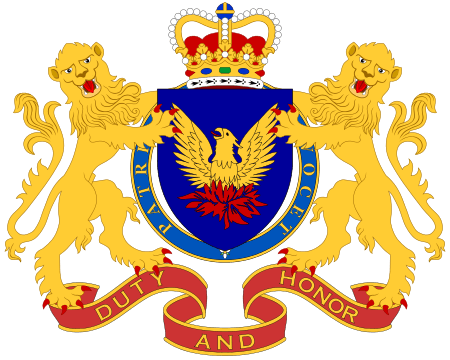Order of Precedence
This is the general order of social precedence, established by the Sovereign and used by the royal court and the Government. The armed forces, the legal profession and the universities employ somewhat different orders of professional precedence.
A person’s spouse does not automatically enjoy equal precedence, except where noted. Where spouses of a title- or office-holder do have equal precedence, spouses of former incumbents directly follow the current incumbent, in inverse chronological order. (For example, the 3rd Duke of Riverdale and his wife would precede the widower of the 2nd Duchess, who precedes the widow of the 1st Duke.)
- The Sovereign and spouse
- Children of the Sovereign (in order of birth) and spouses
- Grandchildren of the Sovereign (in order of parents’ seniority and then of birth) and spouses
- Children of former Sovereigns (in inverse order of parents’ reigns and then of birth) and spouses
- Grandchildren of former Sovereigns (in order of parents’ seniority and then of birth) and spouses
- The Lord High Steward
- The Lord High Chancellor
- The Speaker of the House of Commons
- The Lord Chief Justice
- The Lord High Treasurer
- The Lord Privy Seal
- The Lord High Chamberlain
- The Lord High Admiral
- The Lord High Marshal
- Ambassadors of foreign states (in order of accreditation)
- Dukes and duchesses (in order of creation of peerages) and spouses
- Marquesses and marchionesses (in order of creation of peerages) and spouses
- Envoys and ministers of foreign states (in order of accreditation)
- Eldest children of princes and princesses (in order of parents’ seniority) and spouses
- Earls and countesses (in order of creation of peerages) and spouses
- Viscounts and viscountesses (in order of creation of peerages) and spouses
- Younger children of princes and princesses (in order of parents’ seniority and then of birth) and spouses
- Barons and baronesses (in order of creation of peerages) and spouses
- The Lord Advocate
- Secretaries of State (in order of appointment)
- Knights and Ladies of the Phoenix (in order of appointment)
- Privy Counselors (in order of appointment)
- Lords Justices (in order of appointment)
- Members of Parliament (in order of election)
- Knights Bachelor and Lady Knights (in order of appointment)
- Children of peers and peeresses (in order of parents’ seniority, then inverse order of parents’ succession and then order of birth) and spouses
- Eldest children of dukes and duchesses
- Eldest children of marquesses and marchionesses
- Younger children of dukes and duchesses
- Eldest children of earls and countesses
- Younger children of marquesses and marchionesses
- Eldest children of viscounts and viscountesses
- Younger children of earls and countesses
- Eldest children of barons and baronesses
- Younger children of viscounts and viscountesses
- Younger children of barons and baronesses
- Phoenix Principal Herald
- Senior officers of the Royal Household (in order of appointment)
- King’s Counsel (in order of appointment)
- Esquires (in order of attainment of title)
- Eldest children of children of princes and princesses
- Eldest children of eldest children of peers and peeresses
- Holders of offices of trust under the Crown
- Officers in the armed forces
- Barristers
- Holders of doctorates
- Gentry
Legal Precedence
The following order of precedence is used by the courts of law.
- The Sovereign (as “fount of justice”)
- The Lord Chief Justice
- Lords Justices (in order of appointment)
- The Lord Advocate
- King’s Counsel (in order of appointment)
- Doctors of Laws (in order of attainment of degree)
- Barristers (in order of call to the bar)
- Solicitors (in order of enrollment)
Naval and Military Precedence
The armed forces employ their own order of precedence.
- The Sovereign (as commander-in-chief of the naval and military forces)
- The Lord High Admiral and Lord High Marshal (in order of appointment)
- The First Sea Lord and Chief of the General Staff (in order of appointment)
- The Second Sea Lord and Deputy Chief of the General Staff (in order of appointment)
- Officers of the armed forces (in order of rank and then of promotion to that rank)
- Admirals of the Fleet and Field Marshals
- Admirals and Generals
- Vice Admirals and Lieutenant Generals
- Rear Admirals and Major Generals
- Commodores and Brigadiers
- Captains (Royal Navy) and Colonels
- Commanders and Lieutenant Colonels
- Lieutenant Commanders and Majors
- Lieutenants (Royal Navy) and Captains (Army)
- Sub-Lieutenants and Lieutenants (Army)
- Second Lieutenants
- Midshipmen (in order of promotion)
- Officer Cadets (in order of promotion)
- Non-commissioned officers, seamen and privates (in order of rank and then of promotion)
- Fleet Chief Petty Officers and Sergeants Major
- Chief Petty Officers and Staff Sergeants
- Petty Officers and Sergeants
- Leading Seamen and Corporals
- Able Seamen and Lance Corporals
- Seamen and Privates
University Precedence
The following order of precedence is used at the Royal University of Æfira.
- The Chancellor
- The Vice Chancellor
- The Registrar
- Professors and the Librarian, if doctors (in order of appointment)
- Doctors (in order of attainment of degree)
- Professors and the Librarian, if not doctors (in order of appointment)
- Masters (in order of attainment of degree)
- Bachelors (in order of attainment of degree)
- Scholars without degree (in order of admission)

 His Majesty’s Stationery Office
His Majesty’s Stationery Office
